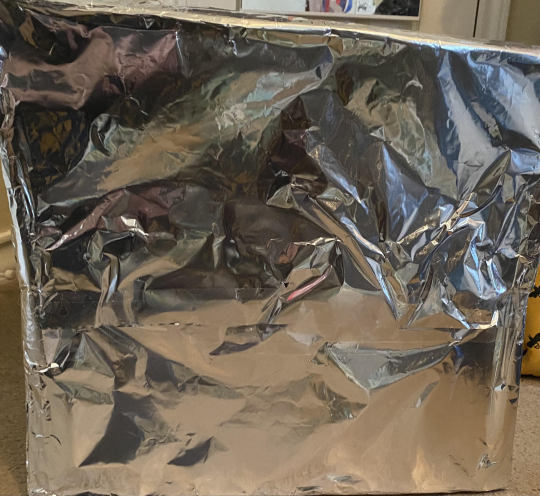Text
Final POD
I wasn’t sure how to change the format in the way it was exported, when I published it on Issuu it said there were only 9 pages, but I made 16 pages on InDesign.
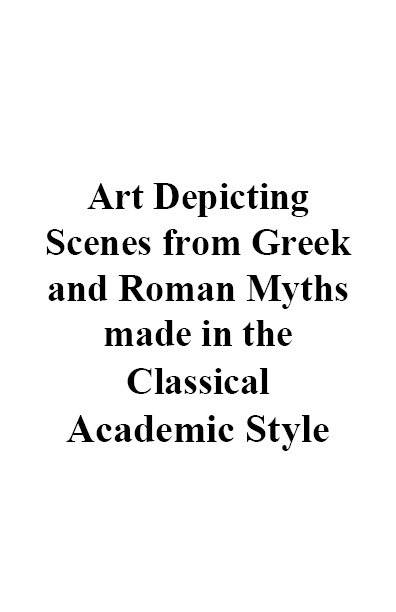
https://issuu.com/lilyannemiller/docs/greek_mythology_book_final
0 notes
Text
Final Archival Activiation
For my final archival activation, I decided that I wanted to focus on Japanese pottery and stoneware. I’m taking an art history class right now, and when I was reviewing my notes for our final exam, I remembered that one of the styles of art that many European artists tried to emulate in their works was known as “ukiyo-e,” where artists would depict subjects from their everyday lives. While I had remembered a few ukiyo-e prints that I had really liked from class, that was the only type of Japanese art that we had been shown, and I wanted to see if there were any types of Japanese art that were in museums and were presented at the same level as those paintings and drawings. I’ve always thought that pottery was such an interesting art form, and the fact that I was able to find several pieces that were made in unusual shapes suggests that these pieces had more roles than that of simply being used to serve food. I’m really glad that I ended up finding these pieces, because they seem like a little window into that time, and I can imagine people having these in their homes while going on with their daily lives.


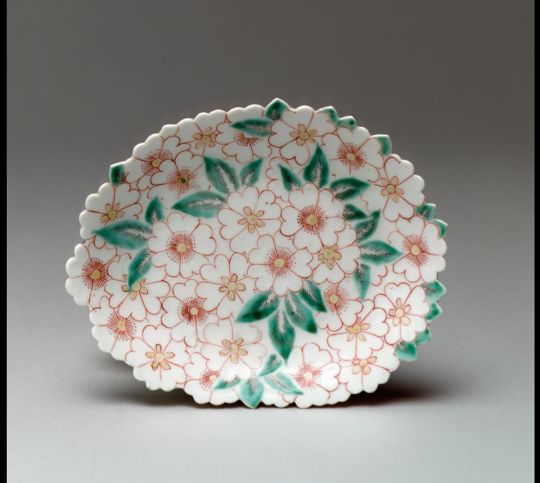
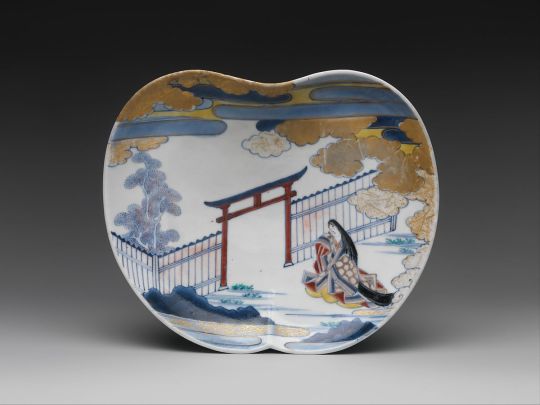




0 notes
Text
Archival Timeline
In this post, I wanted to focus on the period of time in Vincent van Gogh’s life in which he was creating art as a full-time occupation, and would send his works to his younger brother, Theo, who was an art dealer.
Archives:
The Museum of Modern Art: https://www.moma.org/artists/2206
Van Gogh Museum: https://www.vangoghmuseum.nl/en/collection
The Art Institute of Chicago: https://www.artic.edu/
The Metropolitan Museum of Art: https://www.metmuseum.org/art/collection
The Courtauld Galleries of London: https://courtauld.ac.uk/gallery/collection/paintings

Vincent van Gogh, Sorrow, November 1882, pencil, pen and ink on paper, composition: 15 3/8 x 11 3/4" (39.1 x 29.9 cm); sheet: 18 3/8 x 14 5/8" (46.7 x 37.1 cm) (Museum of Modern Art)
This sketch was made shortly after van Gogh began to pursue art as his full-time career while being financially supported by his younger brother, Theo. Van Gogh made this sketch when a young, pregnant prostitute began living with him. In exchange for being allowed to live with him, this woman (known as “Sien”) would go on to model for Vincent van Gogh for a series of drawings that he did. When she eventually fell back into addiction, van Gogh would eventually come to the conclusion that he couldn’t support her and her children any longer. This was the beginning of Vincent van Gogh’s belief that poverty was the root cause of things like prostitution.
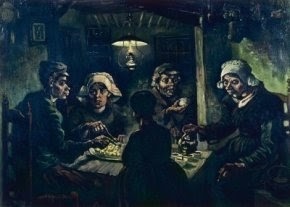
Vincent van Gogh, The Potato Eaters, May 1885, oil on paint, 82 cm x 114 cm (Van Gogh Museum)
This is widely thought to be one of his first masterpieces. Van Gogh wanted to depict the peasants as they truly were, and purposefully chose models that he thought were unrefined and rough around the edges.

Vincent van Gogh, Self-Portrait, 1887, oil on artist's board, mounted on cradled panel, 41 × 32.5 cm (16 1/8 × 12 13/16 in.) (Art Institute of Chicago)
This painting is one of at least 35 in a series that van Gogh painted of himself over a period of 3 years, between 1886 and 1889. He would paint these while living and working in Paris; due to a lack of income, he would paint himself in order to practice portraiture when he couldn’t afford to pay models.
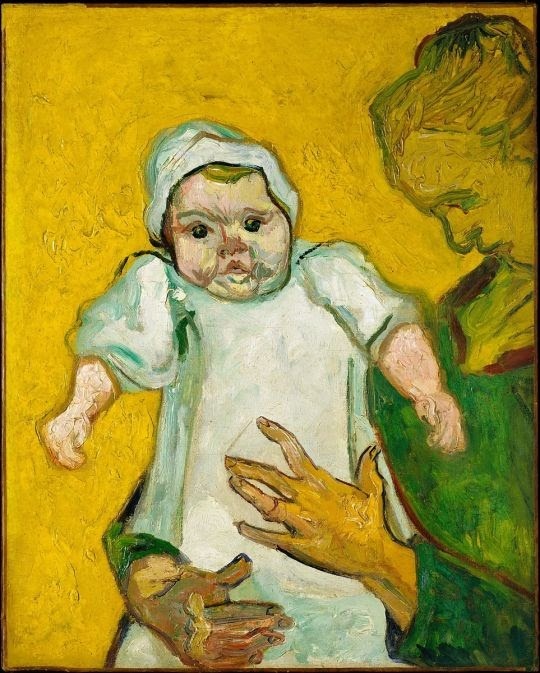
Vincent van Gogh, Madame Roulin and her Baby, 1888, oil on canvas, 25 x 20 1/8 in. (Metropolitan Museum of Art)
This piece is part of a series of paintings that van Gogh did of the Roulin family after he relocated from Paris to Arles. He became acquainted with the local postman, and would paint several versions of each member of the family. This particular painting shows Augustine holding three-month-old Marcelle.

Vincent van Gogh, Sunflowers, January 1889, oil on canvas, 95 cm x 73 cm (Van Gogh Museum)
Vincent van Gogh painted a series of canvases with sunflowers on them, painting in shades of only yellow to show that he could create a cohesive image using a single color. Additionally, sunflowers held a significant meaning for him, which he believed was able to communicate “gratitude.”

Vincent van Gogh, The Bedroom, October 1888, oil on canvas, 72.4 cm x 91.3 cm (Van Gogh Museum)
Van Gogh made this painting of his bedroom in Arles, showing a simple room with minimal furniture and his artworks on the walls. This painting shows the influence of Japanese art on Van Gogh’s works, which can be seen in the deliberate flattening of this 3D space into a 2D area.

Vincent van Gogh, Self-Portrait with Bandaged Ear, January 1889, oil on canvas, 60 x 49 cm (Courtauld Galleries, London)
This portrait was made after Van Gogh cut off his own ear after a manic episode he suffered in Arles, and made this painting as a way of healing himself and reflecting on his illness. Van Gogh believed that painting was how he would heal himself, and this is an attitude that he would carry with him through his struggles with mental health. One of the unique aspects of this painting, compared to his other works, is how realistically Van Gogh chose to depict himself. The brushstrokes are much more controlled than those that are typical in his paintings, showing how Van Gogh was trying to take back his life.

Vincent van Gogh, The Starry Night, June 1889, oil on canvas, 28.7 in × 36 1⁄4 in ( 73.7 cm × 92.1 cm) (Museum of Modern Art)
This is one of the few paintings made by Van Gogh that he painted from memory, as opposed to being painted out in the landscape. The choice to depict the sky in such a tumultuous manner shows how turbulent Van Gogh’s emotions became. After Van Gogh mutilated his ear in 1888, he chose to admit himself into a mental asylum, and painted this from the view from his window over the town below the empty monastery that the asylum occupied.

Vincent van Gogh, Almond Blossoms, January 1890, oil on canvas, 28.9 in × 36 in ( 73.5 cm × 92 cm) (Van Gogh Museum)
Vincent painted this to celebrate the birth of his nephew, and borrowed the subject from Japanese printmaking, which would celebrate almond blossoms as a symbol of new life. Theo, Vincent’s brother, would name his son after Vincent van Gogh.
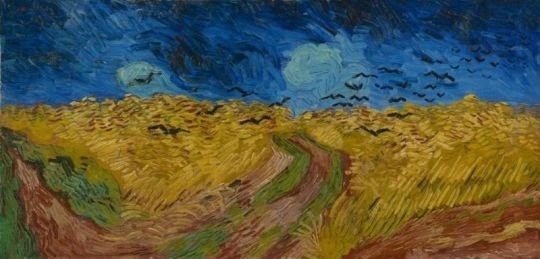
Vincent van Gogh, Wheatfield with Crows, July 1890, oil on canvas, 19.8 in × 41 in (50.2 cm × 103 cm) (Van Gogh Museum)
This painting is thought to be the last piece that Van Gogh would create before his death, only a few weeks after this was made. There is a strong feeling of isolation created by the dark sky and heavy clouds.
0 notes
Text
Vernacular Typography
Statement of Intent: My compositions will explore found messages from small businesses and street signs. Through the use of blocky and bulky letters, repetition, and negative space, I’m able to emphasize the intent of my message.








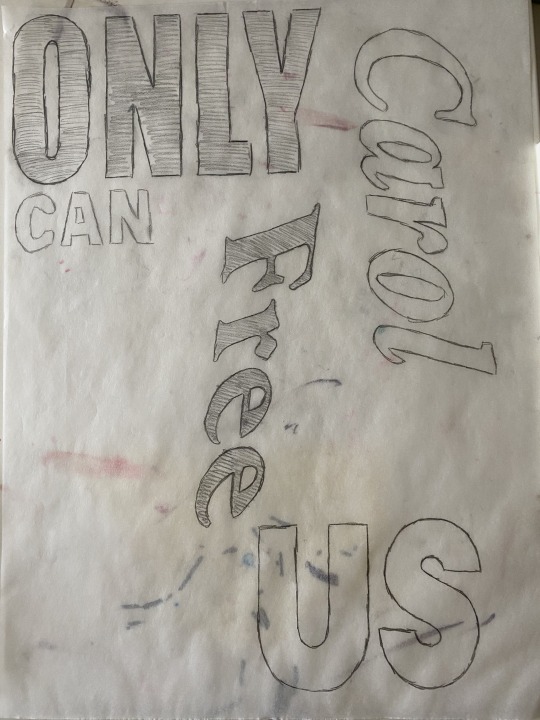


1 note
·
View note
Text
Black Squares
Love:

Chaos:

Fear:

Leisure:

Joy:

Suspicious:

0 notes
Text
Zodiacal Lights
The origins of zodiacal light have allegedly been found as far back as Mesoamerica in the 1500s, but have been named in what some Muslims believe to be an explanation of the Quran, the Ḥadīth. In this collection of Muhammed's teachings, written down centuries after his death, Muhammed classifies zodiacal light as the "false dawn" when describing the 5 specific times at which devout Muslims pray. However, the composition of this light wasn't discovered until several centuries later.
Originally, zodiacal light was thought to be the result of a chemical reaction in Earth's upper atmosphere. However, today zodiacal light is understood to be made up of the dispersion of sunlight off of interplanetary dust particles that range between 1 and 300 microns in length. The origins of this cosmic dust vary from source to source, ranging from the fragments of comets that orbit between Jupiter and the Sun, to the sublimation of the nuclei of comets and asteroid collisions, and even to remnants of the process that created the planets in our solar system. Despite the difference in their creation stories, all of these origins agree on the fact that this dust inhabits the ecliptic plane that the Sun and Moon revolve on. This path is called the "Cycle of Little Animals," or the zodiac, which is where the zodiacal lights take their name from, as these space particles share the same space as the constellations of the zodiac.
As a result of Earth's rotation and tilted axis, these lights will appear to be more visible in different places at different times and seasons. In the Northern Hemisphere, these lights would be most easily seen during spring after sunset in the West and right before sunrise in the East. In the Southern Hemisphere, these lights would be seen in the fall after sunset in the East and before sunrise in the West. Additionally, while these lights can be seen year-round in the tropics, they will most likely be seen around the fall and spring equinoxes in higher latitudes. Zodiacal lights can appear as faintly in the sky as the Milky Way, so it would be easiest to see them when one is distanced from both natural and artificial light, so one should try to distance themselves from cities and view them on a night with a New Moon.
Zodiacal lights are incredibly interesting, and both the science behind them and the beautiful light displays they create across the sky are mesmerizing and will leave a lasting effect on the viewer.

“Zodiacal Light over La Silla,” Wikimedia Commons

“Moonlight and Zodiacal Light Over La Silla Observatory,” Wikimedia Commons
Cited Sources:
Blackwell, D. E. "THE ZODIACAL LIGHT." Scientific American 203, no. 1 (1960): 54-63. Accessed March 18, 2021. http://www.jstor.org/stable/24940544.
Trambley, Paul. “Professor Paul Thursday- What Is Zodiacal Light?” Weatherology°, weatherology.com/trending/articles/Professor-Paul-Zodiacal-Light.html.
“The Zodiacal Light – the Phenomenon Part 1.” Whatwhenhow RSS, what-when-how.com/radial-velocities-in-the-zodiacal-dust-cloud/the-zodiacal-light-the-phenomenon-part-1/.
“Zodiacal Light.” Encyclopædia Britannica, Encyclopædia Britannica, Inc., www.britannica.com/science/zodiacal-light.
“Zodiacal Light: All You Need to Know.” EarthSky, earthsky.org/astronomy-essentials/everything-you-need-to-know-zodiacal-light-or-false-dawn.
0 notes
Text
Color Walk Essay
03.08.2021
While on my walk, I felt a pull towards cool colors, particularly green. Most of the buildings on my walk were muted earth tones or warm colors, so the greens (and blues) were especially prominent. I believe that I was also drawn towards these colors because so many plants were dead due to the recent snow. A lot of the grass was dried and a grey-brown, and the bushes were dead and crackled as I passed by and stepped on them, so the few remaining patches of green grass stood were bright and noticeable.
Towards the end of my walk, I took a picture of a house that was a muted orange, with a tiled terracotta roof. After I took the picture, I went to check my photos to make sure that none of them were blurry or distorted, and only then was I able to notice how blue the sky was. Perhaps it only looked that blue because of how the warm colors contrasted with it, but from then on, it was one of the few things that I was able to notice when looking at all of the pictures I took. The color of the sky was gorgeous, and almost made me emotional.
The blue sky inspired emotion in me, and I was reminded of an exhibit at the 9/11 Memorial in New York. At the bottom of the main ramp, there is an art piece titled “Trying to Remember the Color of the Sky on That September Morning.” This enormous wall is covered in 2,983 squares, each to represent a victim of the 9/11 attacks, and each square is a different shade of blue. In the middle of this wall, the twisted remains of steel from the World Trade Center form the phrase, "No Day Shall Erase You From the Memory of Time." The first time I saw this, I was suddenly overcome with emotion that I can't put a name to, and I think of that blue wall every time I look at the sky. The brown leaves and grass brought down my mood a bit, as it was a reminder of the snowstorm we had recently. I struggled a bit with my mental health during that storm, as I was unable to stay in contact with my friends, and the darkness of the sky seemed heavy and oppressive. The loss of power, however, really helped me connect with my mom and dad, which is a small silver lining.
0 notes
Text
Color Collages
03.02.2021
For my collages, I decided to focus on warm colors for the first and cool colors for the second.
“Sunset Over Water”
This collage was inspired by a memory from when I was much younger, and went to the beach with my mother, sister, and grandmother. I was young enough that I don’t really remember much about the trip, but I do remember watching the sun set over the waves with my family.

“Parents”
This collage is inspired by my parents. My mother’s favorite color is green, and my father’s favorite color is blue, and I wanted to have something to represent them together.
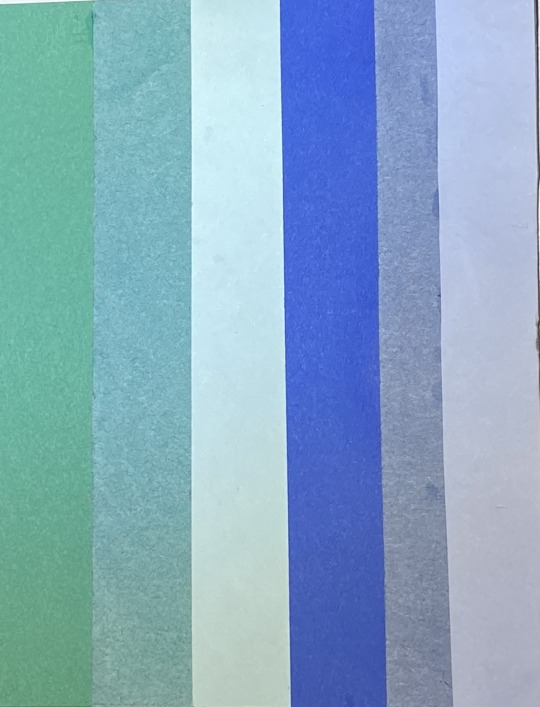
0 notes
Text
February Archival Photo Set
For my French class, we had to prepare a 5 minute presentation for something that was related to France- it could be French cooking, French music, French fashion designers, etc. I decided to make my presentation on different forms of art in the Palace of Versailles, as its something that I’ve been interested in since I learned about it in my freshman year of high school. Below are examples of furniture, art, architecture, and sketches that were featured in either the plans for building the Palace or would fill the rooms once it was completed.
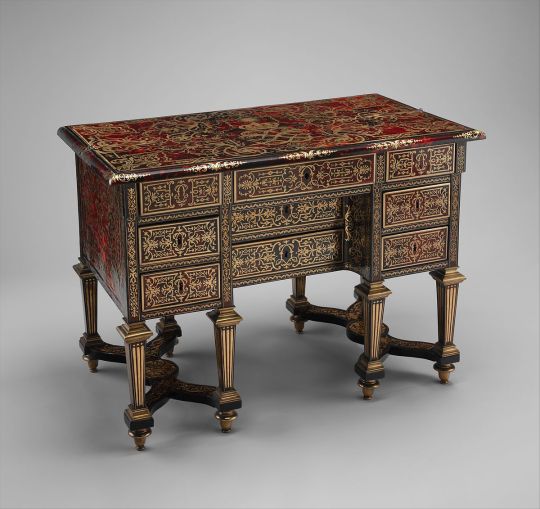

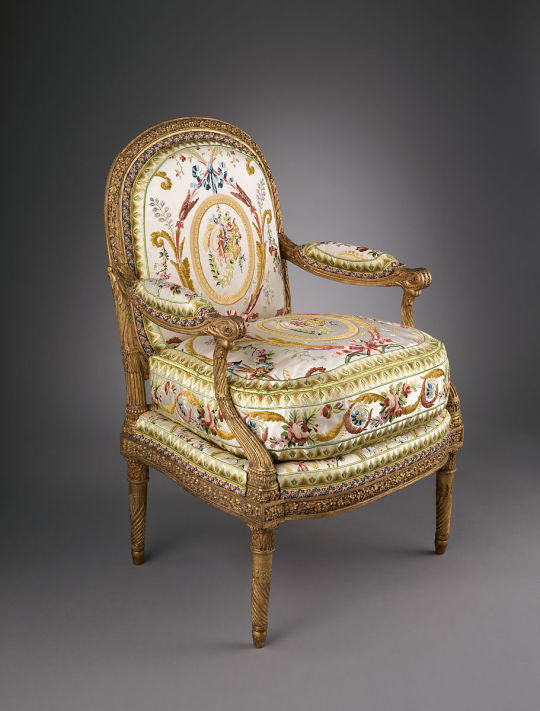

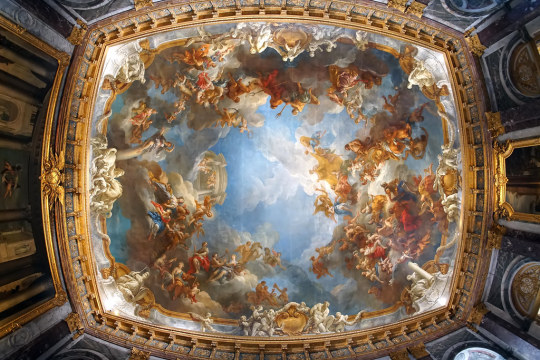


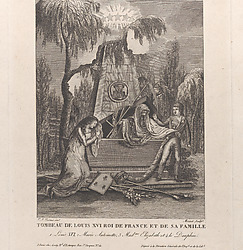
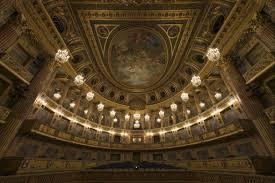

2 notes
·
View notes
Text
February Archival Activation
For my February Archival Activation, I decided that I wanted to focus on one specific artist again, and this time I chose Claude Monet. When I started collecting images for this archive, I was studying Impressionism in my History of Modern Art class. I had seen some of his paintings before, of course, but I fell in love with some of his pieces that aren’t quite as popular. Monet has been credited as the founder of the Impressionist movement, and the Impressionist movement even took its name from his painting Impression, soleil levant (Impression, Sunrise), painted in 1872. This movement as a whole focused on depicting light as it changes, centering works around subject matter that focused on ordinary people, and the inclusion of movement.
Monet was born on November 14, 1840, in Paris, France. His father, Claude Adolphe Monet, was a grocer and ship-chandler and wanted his son to follow in his footsteps, but his mother, the singer Louise Justine Aubrée Monet, supported his desire to pursue a career in the arts. After his mother's passing in 1857, Monet dropped out of school and moved in with his aunt to pursue his artistic career. Monet made his first painting with a model (and his future wife) Camille Doncieux in 1965 and titled it Luncheon on the Grass. She became his muse and his mistress, giving birth to their son Jean in 1867. A few weeks after Camille gave birth, Monet attempted suicide by throwing himself into the Seine river after being tormented by financial troubles. His aunt and father strongly disapproved of their relationship, and Monet would move his family to Paris after telling his family that he had broken off his relationship with his mistress and child. After the pair married in 1870, they lived with the formerly wealthy family of Ernest Hoschedé, where Monet continued to try and sell his pieces to provide for the household he was staying in. Camille had always been in poor health, but after contracting tuberculosis in 1876 and giving birth to a second son, Michel, in 1878, she passed away in 1879 at 32. After Camille's death, Monet would marry Ernest Hoschedé's wife, Alice, and his eldest son, Jean, would marry his step-sister Blanche. Monet would rent a house and gardens in Giverny in 1883 and purchased the home with money he earned from selling his paintings in 1890. It was at this house and in its gardens that Monet would build his famed garden, composed of a flower and Japanese-inspired water garden. Monet would focus exclusively on the water-lilies in his garden for the remainder of his career, featuring it as the subject in his final collection. Unfortunately, tragedy would continue to strike Monet. Alice passed away in 1911, Jean would go on to pass in 1914, and Monet would die in 1926 at the age of 86 from lung cancer.



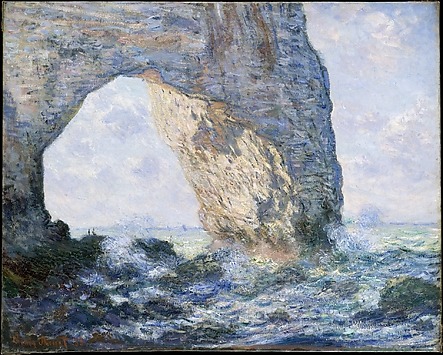


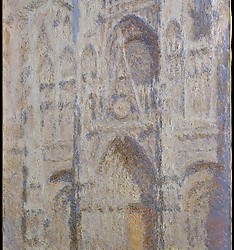

4 notes
·
View notes
Text
“A Short History of Joseph Albers’ Interaction of Color” Response
One of the lines in this reading that really grabbed my attention was on page 16, when the author described how Albers differentiated between “ocular seeing” and “vision.” Albers described “ocular seeing” as simply the biological process of viewing something, and described “vision” as “a transformative process” when used in conjunction with imagination. The reason that this line stuck out to me was because I had never really thought of the 2 processes as being anything other than synonyms to each other, but the different definitions Albers presented really made me think of these processes in a new way. Another part of the story that grabbed my attention was on page 17, when it described how Albers began to move away from the traditional method of teaching in his color course, and instead encouraged students to define colors and hues in their own ways. I think that this is a really incredible way to teach something like this, because different colors have different meanings to different people. By allowing his students to make their own decisions about the psychological meanings behind colors, he’s making sure that each student truly grasps the material and understands the meanings behind each one.
3 notes
·
View notes
Text
Archival Activation
01.31.2021
Born in Matsumoto, Japan in 1929 to an abusive mother and a womanizing and distant father, Kusama began to use art as an escape from her everyday life from a very early age. Her mother would force her to spy on her father and his lovers in order to confirm her suspicions of his infidelity, which caused Kusama to have a strong contempt towards sex and the male body, which is why many of her art pieces included phallic symbols, as a way of concuring her aversions. At the age of 10, Yayoi Kusama began to have vivid hallucinations of flashing lights, dots, and flowers that would speak to her. She was fascinated with the smooth white stones in the river behind her home, which she would cite as the origin of her fascination with dots. When she was 13, she was sent to work in a factory where she would sew and create parachutes for the Japanese military that was currently in the midst of World War II. She spent most of her days in darkness, which she claims caused her to truly begin to value personal and creative freedoms.
Kusama studied a traditional Japanese art style known as nihonga at the Kyoto School of Arts and Crafts, but says that she was strongly influenced by the American Abstract Expressionism. After moving to New York City in 1958, she became extremely prevalent in the avant-garde scene in New York, particularly the pop-art movement. One of the first exhibits that brought her notoriety in New York was her work on her piece Narcissus Garden. Surrounded by 1,500 steel balls that were roughly 30 centimeters in diameter, Kusama was dressed in a kimono in order to highlight how different she was from her surroundings, and both juggled and attempted to sell the balls to passing people like a peddler selling her wares. With a sign that said “YOUR NARCISSISM FOR SALE”, the viewer could see their distorted reflection in the shining balls, and could purchase them for roughly $2.
Some of her more famous works were pieces that came from the Infinity Room series, where the viewer would step into a completely enclosed room full of mirrors and different colored lights, which would take the viewer one step closer to understanding Kusama’s life-long obsession with the idea of one’s self being lost into infinity.
After finding success in the U.S., Kusama would return to Japan in 1973 and check herself into a hospital for the mentally ill in 1977, after struggling with her mental health for several years. I think that one of the reasons why I was so drawn into her art is because she uses it as a way to express the inner workings of her mind.




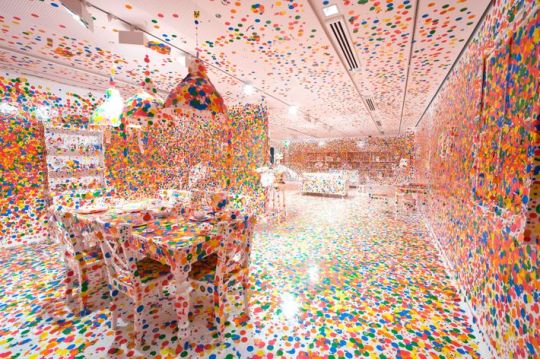

1 note
·
View note
Text
Ilya Kabakov, “The Man Who Never Threw Away Anything”
01.21.2021
I believe that a personal archive is a collection of things that possess some sort of meaning to the person who owns them. It could be a variety of things- a receipt from a grocery trip with a friend, a birthday card from a loved one, even something as simple as a newspaper. One of the quotes that struck a chord in me from the story was when Uncle Misha was reading one of the man's manifestos:
"'Yes, but who can, who has the right to look at my life from the outside, even if that other is me? Why should common sense be stronger than my memories, stronger than all the moments of my life which are attached to these scraps of paper which now seem funny and useless?'"
I think one of the reasons why this resonated so strongly with me is because I have a strong emotional attachment to seemingly ordinary objects, not because they're particularly awe-inspiring, but because of the memories I have of the people who gave me those things. Having a personal archive is like having a permanent record of your memories- they're always the same, small preservation of a single moment in time.
(Pictures from personal archive below the cut)



6 notes
·
View notes














